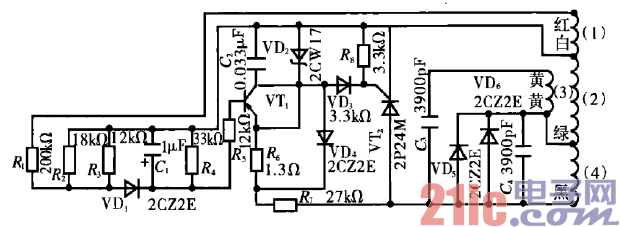Circuit operation principle: The DC resistance of the winding (1) in the figure is about 5 n, which is the main winding of the generator. It outputs 220 V/50 Hz AC during normal operation. The DC resistance of the winding (2) is about 5 n, which is the secondary winding of the generator. During normal operation, it outputs an AC voltage of about 100 V. Through the thyristor vT: controllable rectification, it provides the excitation current required for normal power generation. The winding (3) has a DC resistance of approximately 12 n and is an additional generating winding. When the gasoline engine is started, it outputs an AC voltage of about 11 V, and the initial excitation current is supplied to the excitation winding (4) via half-wave rectification of the diode VDs. The DC resistance of the winding (4) is about 10 n, which is the excitation winding of the generator. The stability of the output voltage of the generator is achieved by controlling the magnitude of the excitation current. The excitation current is provided by the controlled rectification of the thyristor VT2, the size of which is determined by the control angle of VTz, and the magnitude of the control angle is determined by the phase of the trigger pulse, and the phase and output of the trigger pulse are controlled by the transistor VT. The frequency at which the generator outputs alternating current is determined by the speed of the gasoline engine. When the load of the generator changes, the speed control system of the gasoline engine will automatically adjust the throttle to ensure that the generator can run at a constant speed when the load changes, so that the output AC frequency is stable at 50 Hz. SHENZHEN CHONDEKUAI TECHNOLOGY CO.LTD , https://www.szfourinone.com
February 25, 2023